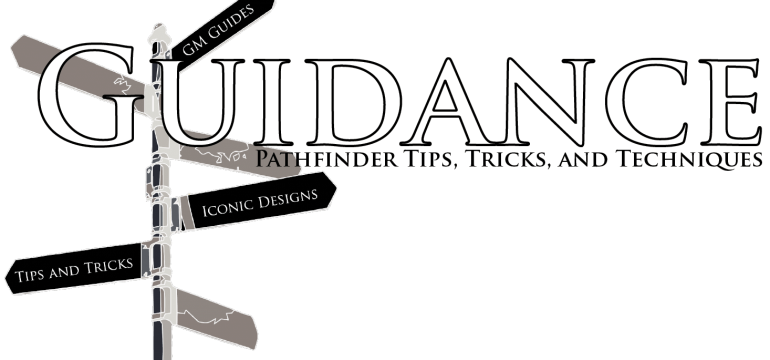So this past week, I had an Everyman Gaming product earn a rating of 5 Stars + Seal of Approval from Endzeitgeist, an acclaimed and trusted reviewer of 3rd Party content. Now, this isn’t my first high-marks rating from Endzeitgeist (bragbragbrag), but what made this one special to me was the content of the product—this 5 of 5, Endzeitgeist-sealed prestige class was none other than a prestige class I wrote to try and mirror the 9-tailed fox legends of East Asia, the kyubi paragon. (Owen’s Law says that I must put a link for you to use to check out this product here, sorry everyone! http://www.everymangaming.com/racial-prestige-kyubi-scion.)
Endzeitgeist wasn’t the only person to give this prestige class high marks; I think it’s currently sitting on two or three 5 Star reviews as of July 17th. Now, this is interesting to note because before last November’s Paths of Prestige, you hardly ever heard of Paizo publishing prestige classes. (Even still, the ratio of Prestige Class to years of Pathfinder aren’t high; we got maybe 20 new ones between Paths of Prestige and Adventurer’s Guide.) However, it’s pretty safe to say that even the 1st-party prestige classes don’t end up garnering a whole lot of buzz or excitement. Why?
Well, I have my theories (which I’m going to share with you, of course), but ultimately, I want to take some time today to talk about what goes into making a good prestige class. I hope you’ll sit back and join me for this one.
Ingredient 1: Concept
Before you even start designing a prestige class, the most important thing to make sure that you have is a strong concept. Prestige Classes that wind up as “The Mounted Combat Prestige Class” or the “Dagger-Fighter Prestige Class” are boring and ultimately lead to rules bloat and character hominization. Why? Because when you make a prestige class tied to something mechanical or combat-oriented, you end up making a path that ALL characters who want to be good at that niche need to take, and that’s boring. What I’m saying is don’t make the 3.5 mistake and make Prestige Classes for “mundane” things.
Instead, a good Prestige Class is built around an idea or a theme. This can be something like a specific organization, a racial theme, or some sort of flavorful idea or philosophy. These concepts possess inherent identity, which is critical to the creation of a successful prestige class. As a general rule, if it makes sense that all characters wanting a specific flavor take your prestige class designed around that flavor, then it has the makings of a good prestige class.
Paizo is REALLY good at this, so you can pretty much look at any Paizo prestige class and be okay. (Some of the new ones in the Adventurer’s Guide, like the Westcrown Devil and the Riventhune one, are spotty, but their track record on picking topics that deserve prestige class is good.) Where Paizo (and many other designers) tend to struggle when designing prestige classes is mechanically, and the reason is pretty simple—Prestige Classes as they’re traditionally written are REALLY difficult to design well because they actively conflict with Paizo’s core design philosophies.
Bacteria vs. Virus
If a core class or a base class is a healthy cell, a Prestige Class is either a bacteriophage or a virus. Basically, your happy, healthy class was going well progressing and doing its thing when suddenly some outside force attacked and ultimately changed it. That “thing” is a Prestige Class, and it either consumed your character’s class level progression for resources (bacteriophage) or usurped it to fuel its own powers (virus).
To drop the allegory, nearly all Prestige Classes in the game require you to basically stop progressing your base class and progress the prestige class instead. These prestige classes are bacteria cells—they attack and kill your base class to use up all of your character’s resources (XP / levels) to progress themselves instead. In doing so, the original base class does not grow or progress at all; it has been completely and utterly usurped. Virus Prestige Classes, on the other hand, attack and kill your base class, but they don’t destroy the base class. They continue to use aspects of your base class the way that a real virus hijacks its host cell’s DNA and RNA to product more viruses. The cell’s organelles, like its cell wall, its cell membrane, its mitochondria, they all still work normally. In this metaphor, they all grow and progress.
The simple difference between these two types of Prestige classes is that bacteria prestige classes halt growth in your base class, while virus prestige classes continue to grow it in a limited capacity as an afterthought.
So applying this idea to Pathfinder, Pathfinder’s design track took a very abrupt change from 3.5’s early on in the game’s history. 3.5 offered very little reward for staying in the same class; it’s what made prestige classes, and therefore multiclassing, so popular. Pathfinder changed this by having many class features and abilities scale with your character level: classes like the witch, which have save DC-heavy class features tied to their witch level, are extreme examples of this change in design philosophy. Because of this, the usurper-style Prestige Class is not attractive to many characters anymore, because Pathfinder accidentally doubled the opportunity cost of entering a prestige class (or multiclassing in general)–in addition to losing future abilities from your class by taking a prestige class, you also halt all of your current abilities from progressing.
3.5 saw this problem and made prestige classes progress spellcasting—the only real class feature that strongly progressed with character level in the area. Pathfinder, however, never fixed this problem for its shiny new class features, and the end result is that few people want to risk these old-style prestige classes. But this isn’t a problem for the just-emerging hijack-style prestige class, like Paizo’s evangelist or Chesandro Warden (or my 5 of 5 Stars prestige class, the kyubi paragon). Prestige classes that acknowledge the abilities your character has earned already and respectfully progresses them are inherently more attractive to players because you’re not forcing them to pick new abilities versus old abilities and new abilities; its merely a contest of new versus new, and that makes your class way more desirable.
What-Do-I-Get 1: Power
Okay, so we’ve talked about how hijack-style prestige classes are better than usurp-style. But this now opens up a very dangerous hole—power. Obviously your new prestige class needs some unique abilities to it. If it doesn’t have any, what’s the point. Also, your prestige class can’t give you EVERYTHING that your base class gives you alongside new benefits; there’s nothing but power creep there. So, what to do?
First, think about what your prestige class boosts and why? The less it boosts, the more it can give. Second, think about delaying old ability boosts. This is an old trick going back a LONG time, because getting something at 10th level that was intended for 9th level is a loss of power, even if you eventually DO get it. The Winter Witch prestige class from Paths of Prestige basically subsides solely on this principle, as does the Chesandro Warden.
Make sure what you’re taking is roughly equal to what you’re getting in power. This is a skill you have to practice to learn; I can’t really teach it. In general, versatility trumps specific unless the specific is EXTREMELY powerful. (Good examples of this is the sanctified slayer inquisitor archetype; sneak attack is a LOT better at damage than judgment, but sneak attack FOR judgment AND extra abilities is a fair trade because judgment is WAY more versatile than sneak attack, which is a damage boost that’s easy to nullify.)
What-Do-I-Get 2: Desirability
Paizo is really good at Part 1: Theme. Paizo is really good at Part 2: Power Balance. Where they often falter is Part 3: Desirability. Note that desirability and power are NOT the same thing; something can be desirable without being a stark combat bonus, as power is situational. (As Order of the Stick villain Xyklon famously says, “Power equals Power.) It is okay to give your party flavorful abilities if they are useful. And Paizo is good at giving abilities that are useful, but they often give abilities that are niche, which is a totally different problem. A niche ability is one that only matters under extremely specific circumstances. For example, a vigilante’s unshakable ability is niche.
Niche abilities are okay as long as they are generally applicable enough that they come up frequently or guaranteed a flavorful outcome for the player when they do come up. Good examples are a bard’s well-versed ability; the bonus basically turns a bard from a poor Fort to a good Fort against those effects, or augments their already incredible Reflex and Will beyond normal measures.
I hope this gives you guys a bit of insight on the sort of things you need to consider when designing a prestige class—it is not easy. In my opinion, designing a good prestige class is as difficult as designing a good base class; it requires a lot of work, a mastery of the rules, a knowledge of what else is out there, and most of all, it requires that you think about what opportunities that the player is losing by taking levels in your class instead of in their base class. Many prestige class writers don’t consider this; they consider the packaged prestige class but not the thing its being applied to. Think about both together and how your prestige class slides onto characters, and you’re well on your way towards making an awesome prestige class!
So until next time, I’m Alex Augunas and I’m always here for YOU when you need a little bit of Guidance. Take care!
Alexander “Alex” Augunas has been playing roleplaying games since 2007, which isn’t nearly as long as 90% of his colleagues. Alexander is an active freelancer for the Pathfinder Roleplaying Game and is best known as the author of the Pact Magic Unbound series by Radiance House. Alex is the owner of Everyman Gaming, LLC and is often stylized as the Everyman Gamer in honor of Guidance’s original home. Alex also cohosts the Private Sanctuary Podcast, along with fellow blogger Anthony Li, and you can follow their exploits on Facebook in the 3.5 Private Sanctuary Group, or on Alex’s Twitter, @AlJAug






